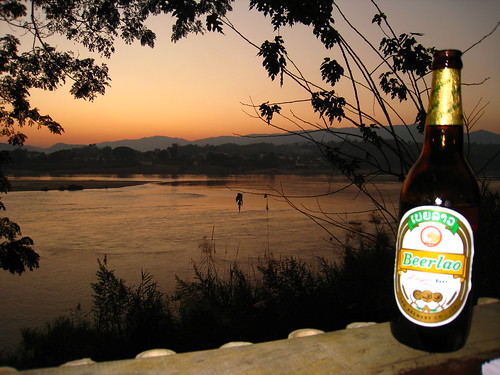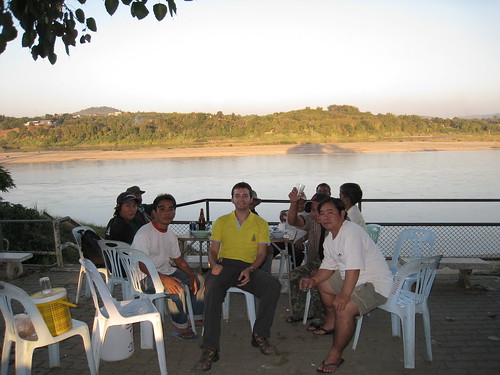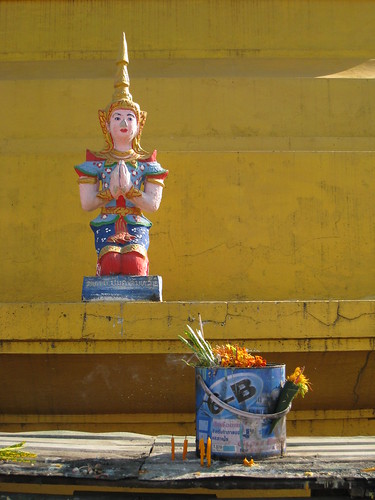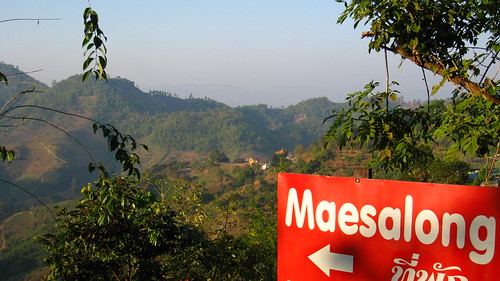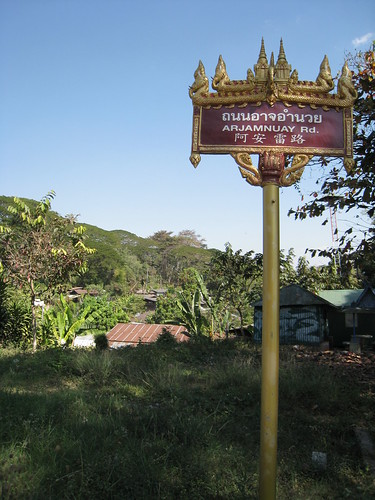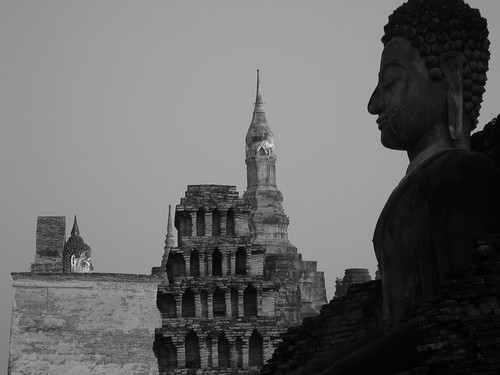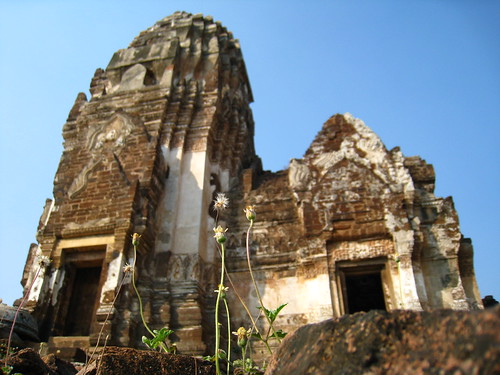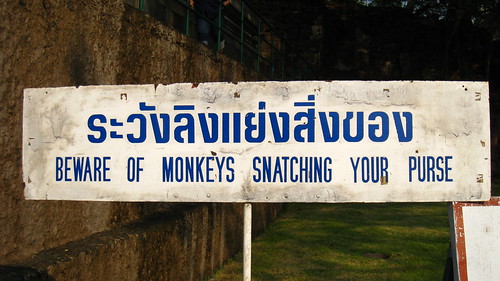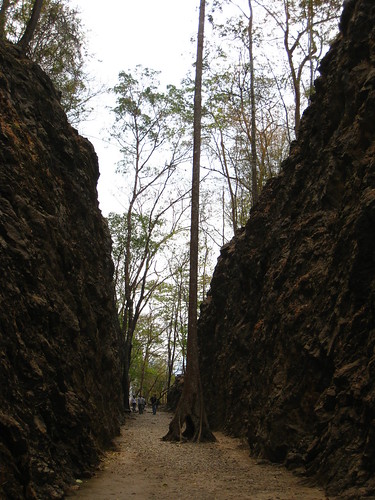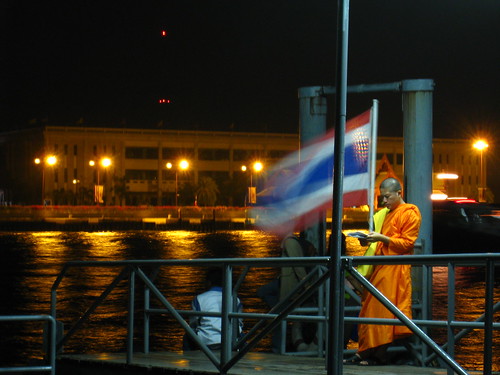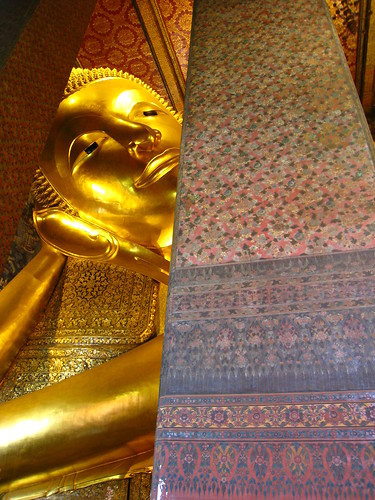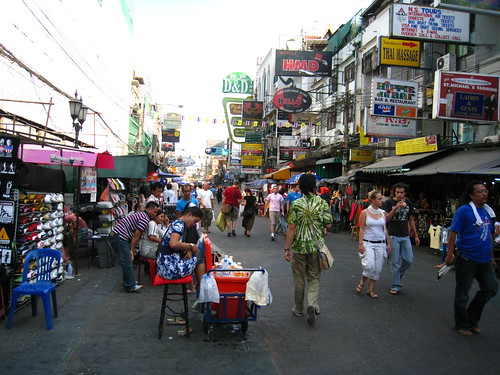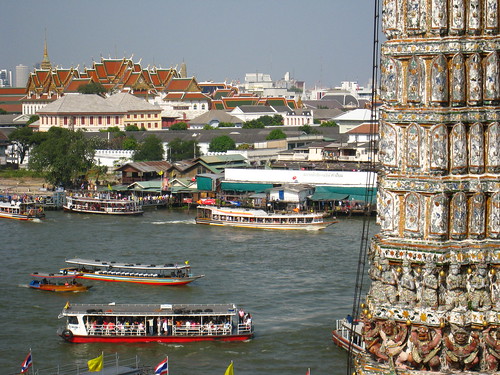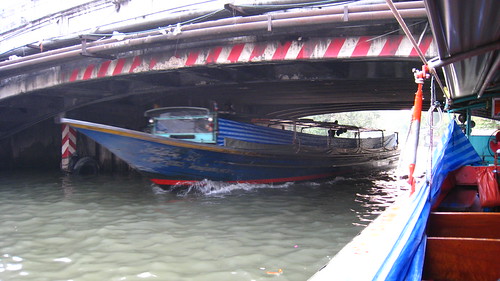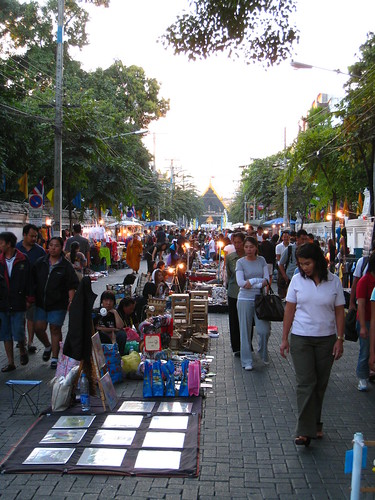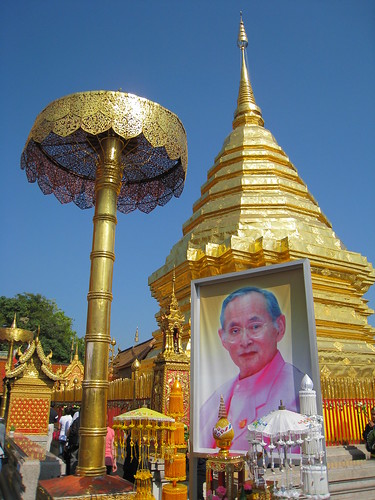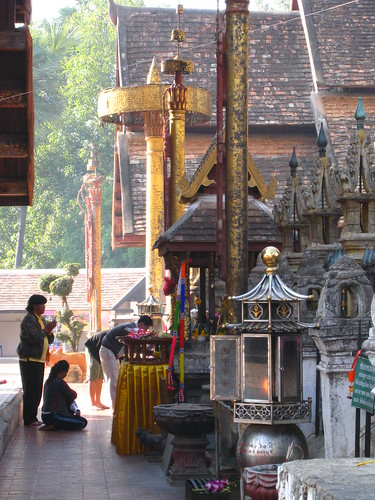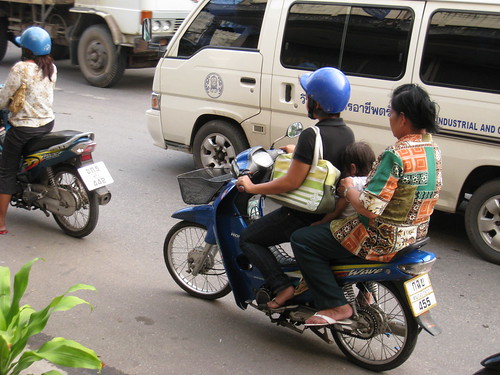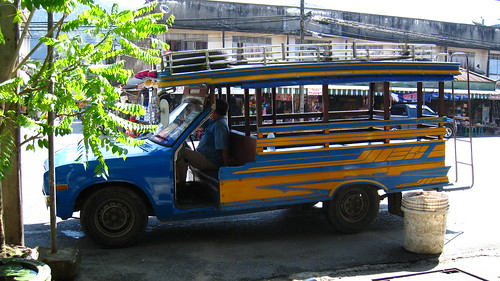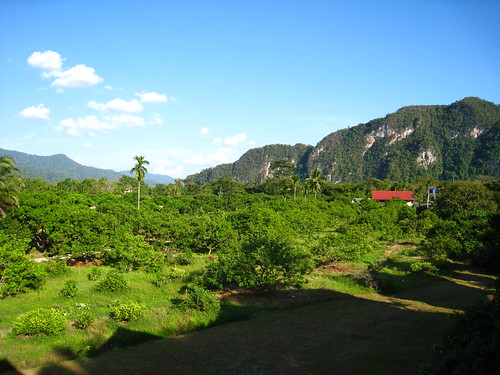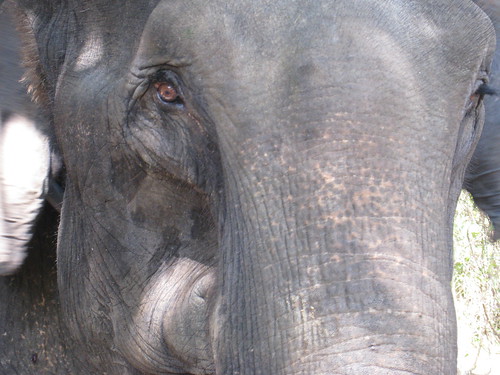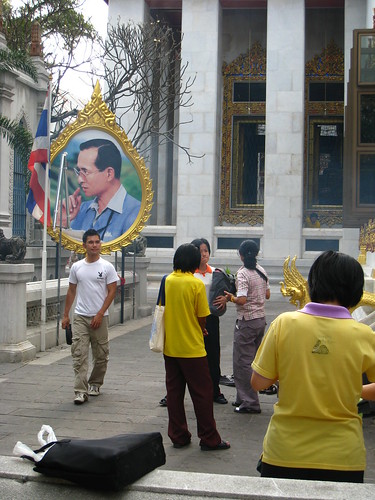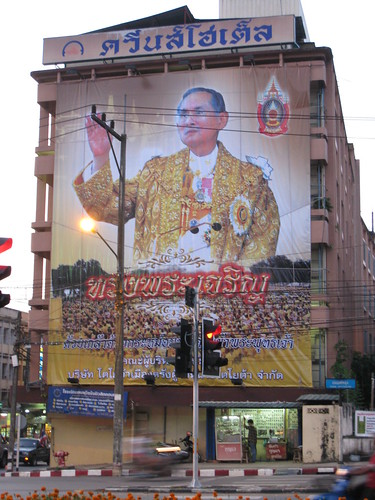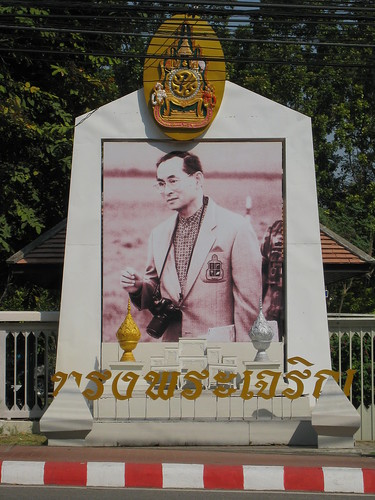
I went to Luang Nam Tha to go trekking in the Nam Tha national park. Luang Nam Tha is a fine small town. What makes Luang Nam Tha special is the scenery surrounding, rich green rice fields dotted with small villages. Luang Nam Tha is renowned for Nam Tha national park. An untouched part of jungle in northern Laos. I did the 3 day Forest Camp trek with Green Discovery.
 We spent 3 days out in the jungle, only coming across people on the last day. When we did they were local tribes people. The first Akha tribes people were hunters with a pack of dogs and homemade rifles (they looked like muskets). One of the most atmospheric parts of the trek was following one of the Akha guides on the last day as he was singing to himself and flashing his machete at any piece of foliage that crossed his path. On the last day we stopped at an Akha village and were invited up to the chiefs hut. Although it did not comapre to my experience in the Cameron Highlands when I visited an Orangi Alsi village. While there weren't any tourists around once we arrived everyone tried to sell us a bracelet or necklace. It is understandable that they want to make some extra money but it does make it difficult for you when you are faced with so many people.
We spent 3 days out in the jungle, only coming across people on the last day. When we did they were local tribes people. The first Akha tribes people were hunters with a pack of dogs and homemade rifles (they looked like muskets). One of the most atmospheric parts of the trek was following one of the Akha guides on the last day as he was singing to himself and flashing his machete at any piece of foliage that crossed his path. On the last day we stopped at an Akha village and were invited up to the chiefs hut. Although it did not comapre to my experience in the Cameron Highlands when I visited an Orangi Alsi village. While there weren't any tourists around once we arrived everyone tried to sell us a bracelet or necklace. It is understandable that they want to make some extra money but it does make it difficult for you when you are faced with so many people.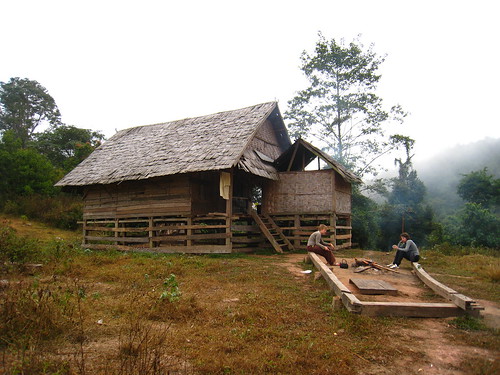 The trek had not begun auspiciously. We had walked for only five minutes before coming across a bog and I managed to get stuck up to my ankles in the mud and very nearly fell face first into it if one of the guides hadn't grabbed me. We were constantly walking up or down, it was very rare to come across a flat stretch. The local tribes people have massive calves from living in the terrain. We walked for about 4 hours a day and didn't get up early. The most difficult parts of the trek were probably the number of single log bridges we had to walk across. On the first one, Jackie, fell off and luckily didn't hurt herself. The day's trekking was quicker than the guides said because we had a relatively fast group. The guides weren't setting the pace. The guides were good and pretty informative. We came across a herd of Buffalo. One of whom was particularly curious, she wandered across the river and had a good sniff of us, while her colleagues rolled about in the mud.We spent the night's in huts in the jungle. We had sleeping bags and mosquito nets. The first night was absolutely freezing and I struggled to sleep. On the second night mice scurried around. Every meal was sticky rice with buffalo meat and some vegetables of some sort (generally cabbage). On the last night the Akha guides brought some chickens. The only bottled water we had for the three days was what we carried in with us, once this ran out we were on to boiled water. Kevin and Travis decided to bring a couple of bottles of Beer Lao with them. There was plenty of rice whiskey round the camp fire, even a green variety. It was a very enjoyable 3 days especially because Travis, Kevin, Josephine and Jackie were a great bunch of people.
The trek had not begun auspiciously. We had walked for only five minutes before coming across a bog and I managed to get stuck up to my ankles in the mud and very nearly fell face first into it if one of the guides hadn't grabbed me. We were constantly walking up or down, it was very rare to come across a flat stretch. The local tribes people have massive calves from living in the terrain. We walked for about 4 hours a day and didn't get up early. The most difficult parts of the trek were probably the number of single log bridges we had to walk across. On the first one, Jackie, fell off and luckily didn't hurt herself. The day's trekking was quicker than the guides said because we had a relatively fast group. The guides weren't setting the pace. The guides were good and pretty informative. We came across a herd of Buffalo. One of whom was particularly curious, she wandered across the river and had a good sniff of us, while her colleagues rolled about in the mud.We spent the night's in huts in the jungle. We had sleeping bags and mosquito nets. The first night was absolutely freezing and I struggled to sleep. On the second night mice scurried around. Every meal was sticky rice with buffalo meat and some vegetables of some sort (generally cabbage). On the last night the Akha guides brought some chickens. The only bottled water we had for the three days was what we carried in with us, once this ran out we were on to boiled water. Kevin and Travis decided to bring a couple of bottles of Beer Lao with them. There was plenty of rice whiskey round the camp fire, even a green variety. It was a very enjoyable 3 days especially because Travis, Kevin, Josephine and Jackie were a great bunch of people.
I booked my tour with Green Discovery, a 3 day trek for $87. One thing to bear in mind if you are travelling on your own is that these treks will not go with 1 person. They require a minimum of 2 people, so your choice of what trek to do can be limited by what other people want to do. I was under the impression that going deep into the jungle we would visit tribal villages removed from the outside world. I wasn't the only one under this impression. Two people in our group of five had already done the Green Discovery 2 day 1 night trek (where they spent a night next to a village) and enjoyed it so much that they did the 3 day trek. On our first night we arrived at our camp in the middle of the forest. We had a wash in the ice cold stream and then had dinner. When dinner finished we asked our guide when we would be visiting the village. He replied that there was no village. We paused and asked again. We couldn't understand why there wasn't a village nearby because we had two tribes people who came with us. It turned out that these two tribes people had come from the village on the road we were dropped at before beginning our hike. The second night I again assumed we would be near a village but we were staying in an abandoned village and the Akha had moved 3 hours away. The 3 day trek is described as the Nam Ha Forest Camp. The sales pitch on their website and on their leaflets is ambiguous enough for you to infer what you want from them. The fact that all 5 of us were under the wrong impression shows that they should make things clearer.
 Luang Nam Tha is a fine small town. It was rebuilt after being bombed flat during the Second Indochina War. The most atmospheric part of town is by the river where the locals have built a bamboo bridge. If you don't want to go trekking then it is still possible to explore the countryside near to the town which is dotted with villages. It is worth cycling (or hiring a tuk-tuk) to go to Wat Phoum Pouk, while the ruins are not worth seeing in themselves the view is beautiful and the journey along the dirt tracks through the green rice paddies is superb. A feature Luang Nam Tha are the drug pushers. Akha tribe women walk up and down the high street. If you are sitting in any of the restaurants or cafes along here they will attempt to sell you tribal bracelets. They are persistent. If you decide to purchase a bracelet a tribal hat will then appear with sachets of drugs inside.
Luang Nam Tha is a fine small town. It was rebuilt after being bombed flat during the Second Indochina War. The most atmospheric part of town is by the river where the locals have built a bamboo bridge. If you don't want to go trekking then it is still possible to explore the countryside near to the town which is dotted with villages. It is worth cycling (or hiring a tuk-tuk) to go to Wat Phoum Pouk, while the ruins are not worth seeing in themselves the view is beautiful and the journey along the dirt tracks through the green rice paddies is superb. A feature Luang Nam Tha are the drug pushers. Akha tribe women walk up and down the high street. If you are sitting in any of the restaurants or cafes along here they will attempt to sell you tribal bracelets. They are persistent. If you decide to purchase a bracelet a tribal hat will then appear with sachets of drugs inside.